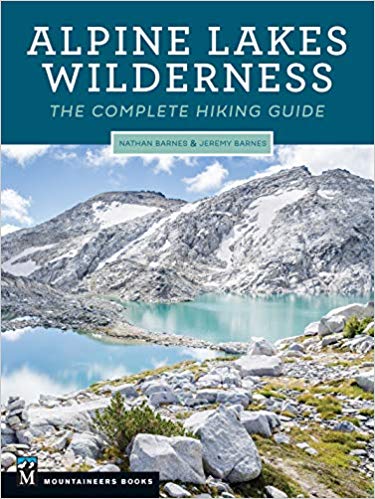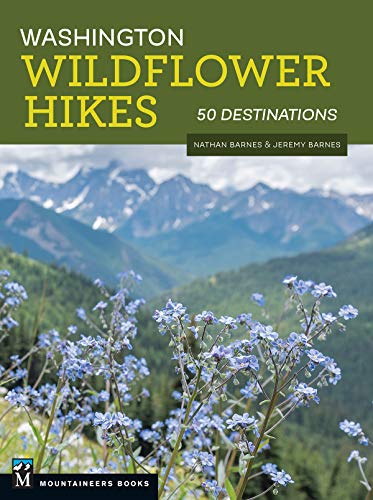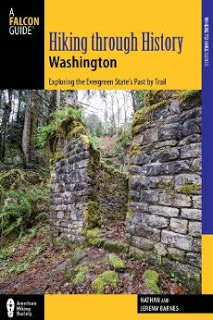Steam Donkey Trail - Dosewallips State Park
This short loop is a great way to stretch your legs when exploring the Hood Canal area.
Total Distance: 3.0 miles
Total Ascent: 450ft
Highest Point: 500ft
Total Ascent: 450ft
Highest Point: 500ft
To get there, take I-5 south through Tacoma to Exit 132B SR 16 toward Bremerton. Continue on SR 16 for 27 miles to merge with SR 3 North. Follow SR 3 to the Hood Canal Bridge, taking a left over the bridge onto State Route 104. Follow SR 104 as it merges onto US 101 and continue 22 miles through Quilcene to Dosewallips State Park. View Google Directions >>
The hike begins at the Dosewallips State Park entrance booth. If you’re not camping in the park, ask the ranger where you can park to hike the trail. Usually there will be open spots right behind the booth. Once parked, follow a rough path near the booth to the Maple Valley Trailhead. Here the actual trail begins and the path quickly enters a mixed second generation forest and soon dampens any nearby sounds from the campground. Almost immediately the Dosewallips River appears through breaks in the treeline as you glide through stands moss-heavy alders, maples and cedars. Continue following the river to a junction with the Rhody Cut-off, a shortcut that skips most of the hike and connects to the far side of the Steam Donkey Loop. Keep to the right and soon find yourself at the first of many bridges over Phantom Creek.
From Phantom Creek climb up through fields of sword fern and vine maple toward the park boundary. The trail levels out and passes by a partially cleared area that was logged a few years ago before turning sharply to the left and shortly arriving at a fire road. Cross it to connect with the Steam Donkey Loop Trail. From here, the trail climbs slightly through the quiet forest, crossing the Phantom Creek twice before veering to the left and descending back toward the campground. On your descent pass the junction with the Izett Railroad Grade and later a junction signed "Railroad Grade Circa 1901" take a moment here to find the nearby historical marker and look for rusted pieces of the area’s railroad history. Continue following the trail back down to the campground. The trail drops you back on the main park road. Head left back to the park entry booth.
If you’re not camping at Dosewallips State Park, this trail is better as an addition to a day of hiking in the area rather than the only hike you do. However, it works well in the winter when other hikes are less accessible and is ideal for younger hikers, as side trails and shortcuts provide ample opportunities to shorten the hike if needed. Although the park is quite popular, the trails get less traffic than expected, lending a feeling of the trail being more wild than it is. With 425 acres to explore, Dosewallips State Park is well worth a visit. Next time you’re in the area, give this “hidden” hike a try.
Back around the turn of the last century, the nearby town of Brinnon was quickly becoming a bustling logging community. In 1903, James Izett purchased his first timber claim in the Dosewallips River Valley, and quickly began construction of the first logging railroad south of the Dosewallips. The Izett Logging Company eventually built five miles of railroad to help haul timber down to Hood Canal where logs would be lashed together and floated down to lumber mills in booms. During this era, loggers used large steam engines - often called steam donkeys - to help pull logs and machinery up and down mountainsides. In 1910 wildfires ravaged one of the Izett logging camps, destroying two steam donkeys and a great deal of timber. Just three years later, James Izett passed away and the company was quickly sold off. The railroad was eventually removed, and today the railroad grade is still in use as part of the Dosewallips State Park trail network.
From Phantom Creek climb up through fields of sword fern and vine maple toward the park boundary. The trail levels out and passes by a partially cleared area that was logged a few years ago before turning sharply to the left and shortly arriving at a fire road. Cross it to connect with the Steam Donkey Loop Trail. From here, the trail climbs slightly through the quiet forest, crossing the Phantom Creek twice before veering to the left and descending back toward the campground. On your descent pass the junction with the Izett Railroad Grade and later a junction signed "Railroad Grade Circa 1901" take a moment here to find the nearby historical marker and look for rusted pieces of the area’s railroad history. Continue following the trail back down to the campground. The trail drops you back on the main park road. Head left back to the park entry booth.
If you’re not camping at Dosewallips State Park, this trail is better as an addition to a day of hiking in the area rather than the only hike you do. However, it works well in the winter when other hikes are less accessible and is ideal for younger hikers, as side trails and shortcuts provide ample opportunities to shorten the hike if needed. Although the park is quite popular, the trails get less traffic than expected, lending a feeling of the trail being more wild than it is. With 425 acres to explore, Dosewallips State Park is well worth a visit. Next time you’re in the area, give this “hidden” hike a try.
History
Before Europeans made it to the Puget Sound, Native American tribes lived and traded along Hood Canal and the rivers that flow into it, including the Dosewallips River. The name is derived from the Twana word “dos-wail-opsh,” in reference to a legendary chief who was transformed by The Great Changer into a mountain near the head of the river.Back around the turn of the last century, the nearby town of Brinnon was quickly becoming a bustling logging community. In 1903, James Izett purchased his first timber claim in the Dosewallips River Valley, and quickly began construction of the first logging railroad south of the Dosewallips. The Izett Logging Company eventually built five miles of railroad to help haul timber down to Hood Canal where logs would be lashed together and floated down to lumber mills in booms. During this era, loggers used large steam engines - often called steam donkeys - to help pull logs and machinery up and down mountainsides. In 1910 wildfires ravaged one of the Izett logging camps, destroying two steam donkeys and a great deal of timber. Just three years later, James Izett passed away and the company was quickly sold off. The railroad was eventually removed, and today the railroad grade is still in use as part of the Dosewallips State Park trail network.
Nearby hikes
Similar Difficulty
Similar Features












